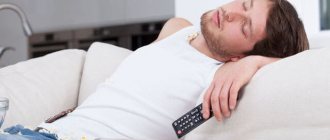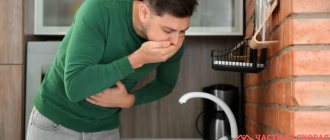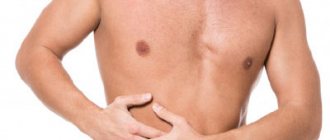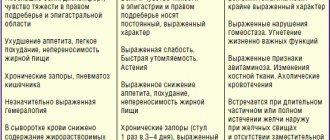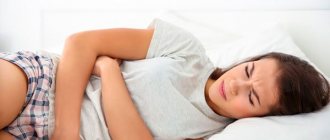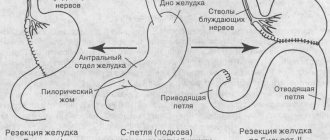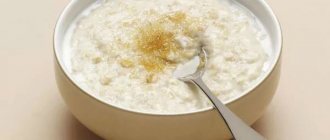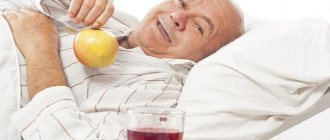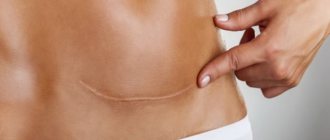Any eating disorder has negative consequences for the functioning of the entire body. But most of all, the organs of the gastrointestinal tract suffer. They take the blow upon themselves, because it is they who are entrusted with the task of assimilation and digestion of food. Both chronic malnutrition, for example, with anorexia, and constant overeating undermine the normal functioning of the stomach, pancreas, liver, kidneys, and intestines.
Over time, all this can lead to quite serious problems, in particular to the development of gastritis, stomach and duodenal ulcers, pancreatitis, etc. Therefore, if you or your clients have similar eating disorders, when the diet is much more than the prescribed norms, then be sure to take care of the proper restoration of the gastrointestinal tract. And experts from the school of nutritionists at the Wellness Consulting Academy will now tell you how to do this...
Restoring the stomach after overeating
The stomach is the organ where eaten food enters first. He secretes a special secret whose task is to break down food into its components and digest it. If a person eats properly and in adequate quantities, then it is absolutely not difficult for this organ to perform its function. Another question is when everything is eaten at once: fatty, spicy, fried, with coarse fiber and an abundance of protein.
This is where the first problems begin. Gastric juice is not able to process a large amount of indigestible food, and in this case there are not enough pancreatic enzymes. Therefore, the gastrointestinal tract organs rebel: heaviness and pain appear in the stomach, nausea begins, and heartburn or vomiting may even occur. These are the initial symptoms of non-bacterial reactive gastritis.
Frequent cases of overeating often lead to chronic gastritis, the manifestations of which are much more serious. In many cases, hospitalization with appropriate therapy is required.
You can understand that things are bad by the characteristic pain in the stomach after eating, the appearance of a white coating on the tongue, heaviness and frequent cases of heartburn.
If chronic gastritis is not treated and you do not adhere to a special therapeutic diet, then over time it can develop into a stomach ulcer, which will definitely require an immediate review of your diet. It is worth considering that in some severe cases, the ulcer requires surgical treatment, and any operations have many side effects, if only because of the use of the same anesthesia.
That is why after several days of overeating (for example, during the holidays or vacation), you need to give your stomach a rest. A special fasting diet based on pureed low-fat soups, slimy porridges or cereal decoctions, boiled chicken or fish, and baked apples will help best.
During unloading, you need to exclude fatty, fried, salty and spicy dishes from the menu, for example, kharcho soup, rassolnik, fatty borscht, pickled vegetables, pickles, sausages, pork, lamb, duck, goose. Fast food, dry quick meals (sandwiches, pizza, burgers) and all kinds of snacks such as chips, salted nuts and crackers are completely prohibited.
It is advisable to replace white bread with black bread, preferably made from wholemeal flour. In general, all food should be soft and non-aggressive in terms of the use of spices and cooking method (boiled, stewed, steamed food). If possible, dishes should be ground - this way they will be easier to digest and assimilate, and the gastric mucosa will be able to take a break from active work and recover a little.
In some cases, flaxseed stomach cleansing will be effective. To prepare the decoction, you need to pour boiling water over a teaspoon of flax seeds and let it brew for a quarter of an hour. Then the broth must be filtered and taken 3 times a day 30 minutes before meals.
Split meals (5-6 times a day) in small portions are excellent for restoring the stomach. This is the first advice that any gastroenterologist, as well as a nutrition consultant who has completed courses in dietetics or training in nutrition, will give you. Do not forget about maintaining a drinking regime, drink 1.5-2 liters of clean still water per day (it is better not to use soda, as carbon dioxide irritates the gastric mucosa).
For dinner, you can only eat complex carbohydrates (vegetables, cereals) in combination with light proteins. No heavy meals before bed. Last meal 3 hours before going to bed or earlier.
If you really want to eat before going to bed and you can’t fall asleep on an empty stomach, then try drinking a glass of low-fat kefir. For satiety, you can add a spoonful of dry fiber (it is sold in many supermarkets or health food stores). Instead of fiber, small amounts of sesame, flax or chia seeds are suitable.
Such a light snack will fill your stomach, but will not put a strain on the pancreas and will not bring extra calories, which, if in excess, are stored in fat reserves. As for the advice to drink a glass of water at night so that you don’t feel like eating, it is only relevant if you do not have a tendency to retain excess fluid, there is no edema and no associated problems with the cardiovascular system. It is best to drink water 1-1.5 hours before bedtime, no later.
Please note that if you have an upset stomach due to poor diet and regular overeating, it is best to consult with a registered dietitian or an experienced nutrition consultant with training in dietetics.
He will prescribe you a special therapeutic diet, tell you about the rules of fasting days, and advise what tests and examinations you should undergo to assess the severity of the problem. Treatment of diseases of the stomach and other gastrointestinal tract organs should only be carried out by a doctor!
HOW TO GET YOURSELF IN SHAPE AFTER A PROLONGED OVEREATING. ADVICE OF A GASTROENTEROLOGIST
If you feel that you have overate, it is important to quickly return the body’s state from “stress” mode to “normal functioning” mode. After all, when overeating, not only the gastrointestinal tract is overloaded, but also the hepatobiliary system (liver, bile ducts, gall bladder). When we receive an excessive amount of “harmful” food that we like most (usually multi-component dishes: for example, cabbage rolls, gravy with flour and various salads with mayonnaise), the digestive system is not able to perform its job efficiently. If such overeating continues for more than one day, the food remains in the intestines and is not digested.
Why does overload occur?
Each section in the digestive tract performs its own task. For example, the stomach and duodenum are mainly responsible for protein food; they break it down so that in the small intestine it gives its valuable microelements and components to the body. The gallbladder and liver are responsible for digesting fats. And the pancreas is for carbohydrates. Of course, the functions of these organs are much broader in the digestion of valuable components, but in general, each organ has its own key function. And when the usual amount of food arrives, the body works “in a chain”: after, for example, the stomach has completed its task, it can rest, and the next section begins to work.
When food comes continuously, work goes on constantly, the gastrointestinal tract becomes exhausted, over time it does not find the resource to carry out its work efficiently and does not complete it by 25-50%. If there are also concomitant chronic diseases, powerlessness comes faster. As a result, most food passes from one compartment to another only partially digested. In the end, it enters the large intestine not completely processed.
The large intestine is a very important part of the gastrointestinal tract, responsible not only for proper cleansing of the body, but also for the production of essential vitamins (in particular B vitamins), a number of enzymes, and compounds necessary for healthy functioning. When unprocessed food enters it, it cannot extract all the useful elements from it, and is also unable to move it at the usual speed, and the movement of masses through the intestines is inhibited. Unprocessed food masses begin to “ferment” in the alkaline environment of the intestines. This leads to bloating and disruption of microbiocenosis (the ratio of the number of beneficial and harmful bacteria). Pathogenic bacteria (fungi and opportunistic flora) subsequently lead to disruption of the integrity of the intestinal walls and the release of toxic elements into the blood, which causes the development of an inflammatory process in the body. Thus, systematic overeating leads to irreversible changes.
What to do after overeating?
The answer is to help the body get back into shape on its own. To do this, in the days following overeating, first of all, you need to drink at least 1.5 liters of regular (still) water. If you have eaten too much fatty foods, add lemon juice to the water (half a lemon per 1 liter of water). If you have overused carbohydrate foods, the water should be with honey or ginger (1 tablespoon of honey and 1 tablespoon of grated raw ginger per 1.5 liters of water). If the food was protein, you will need water with turmeric (1 tablespoon of turmeric per 1 liter of water) or with cucumber (cut 1 medium cucumber per 0.5 liter of water). Plain water, without additives, will also help. After all, the body first needs to be cleansed of undigested food, give the cells water that they did not receive during poor intestinal function, and also increase the outflow of lymph (many lymph nodes are located just near the large intestine).
Also, the day after overeating, you should not fast, it is better to stick to a normal diet. As already noted, all undigested food remains are in the intestines, and a fasting day will only slow down their elimination.
To help the intestines recover faster, it is necessary to introduce fiber into the diet. It is found mainly in vegetables (in particular, zucchini, broccoli, cauliflower, white and Chinese cabbage, tomatoes, cucumbers, all types of lettuce, celery, pumpkin, as well as beets and carrots). Fiber will act as a prebiotic - nutrition for the microflora of the large intestine, necessary for the formation of integral microflora and good motor function of the gastrointestinal tract. Also, fiber will create additional volume, which, when interacting with the receptors of the large intestine, will remove the remains of undigested food from the body. Adding any vegetable oil to vegetables will enhance this function with an additional release of bile and speed up the cleansing of mucus from the intestinal walls.
What can you eat?
For at least a few days, it is necessary to exclude gluten-containing products from the diet (wheat products (bread, semolina, pasta, couscous, bulgur), breaded dishes, products containing food additives E150, E160, E411, E471, sausages , chips, French fries, beer, bouillon cubes, cocoa, instant coffee, foods with sugar, sweets, milk (except fermented milk products).
Nutrition should consist of proteins, fats and carbohydrates in the following proportions: 30%, 10%, 60%. Of these, proteins are white meat, fish, cottage cheese (fat content from 5% to 9%). They should be consumed 250 g per day. Fats – exclusively vegetable oils (except sunflower): olive, grape seed, flaxseed, mustard, rose hip, milk thistle. And the diet should contain up to 25-30 g per day. Carbohydrates – vegetables (including potatoes) and fruits – from 500 g per day. Don't forget to also drink at least 1.5 liters of clean water per day. Such a diet will eliminate all functional disorders and cleanse the body within a few days. And if you follow such a diet constantly, your body will thank you.
In general, after overeating, you should formulate the diet for the next days in accordance with the amount of harmful substances that entered it the day before. For example, if you have eaten too much fatty foods, especially of animal origin (jelly, meat gravy, mayonnaise, a lot of butter, greaves, etc.), then in addition to adding vegetable oil to your diet in the following days (which will stimulate bile secretion), switch to a vegetarian diet using beans, lentils, bulgur and cottage cheese as proteins (5-9%). Also add fruits to your diet (but not more than 300 g per day).
If you have overeaten protein foods (meat, beans, cheese, eggs), in the following days eat cereals (except semolina and millet), vegetables, vegetable soups with the addition of butter (up to 20 g per day).
If the body is overloaded with simple carbohydrates (donuts, bread, sweets), then rest should be given to the pancreas and duodenum by introducing cereals, non-animal proteins (legumes), fish (fatty or red), cottage cheese and ground vegetables (not potatoes) into the diet , beets, carrots). We exclude fruits altogether, along with sweet drinks and alcohol. But be sure to introduce fermented milk products (from 300 g per day).
Milk and dairy products
Dairy products are divided into, actually, milk and fermented milk. Both the first and second are beneficial for the body. However, after overeating, especially animal fats and simple carbohydrates, you need to introduce fermented milk products into your diet: kefir, yogurt, fermented baked milk, various starters, cottage cheese. Thanks to the content of beneficial bacteria, they will restore the necessary balance of the microflora of the large intestine.
Among fermented milk products, kefir is extremely beneficial. It contains a huge base of lactobacilli and other microorganisms, such as: Lactobacillus acidophilus, Bifidobacterium bifidum, Streptococcus thermophilus, Lactobacillus delbrueckii subsp. bulgaricus, Lactobacillus helveticus, Lactobacillus kefiranofaciens, Lactococcus lactis. All these microorganisms live in our intestines. They are responsible for the breakdown of carbohydrates and vegetables, accelerate the motility of the gastrointestinal tract and, as a result, remove toxic substances. Most of them are included in probiotics. But in kefir they have a multicomponent composition. Studies have shown that consuming Lactobacillus acidophilus as part of probiotic preparations reduces blood cholesterol levels. And regular consumption of kefir reduces the amount of fat in the liver, that is, it leads to regression of the so-called fatty infiltration of the liver, which is a very complex pathology. So, kefir definitely takes first place among drinks that cleanse the body and help restore intestinal microflora.
In the production of fermented baked milk, Streptococcus thermophilus is used, which absorbs and processes lactose and is therefore used for lactase deficiency. Its acidifying effect can stop fermentation in the intestines, providing a bactericidal effect against pathogenic microorganisms. It is also able to synthesize and secrete polysaccharides, which makes this product not only a probiotic, but also prebiotics (food for microflora, a source of further recovery and growth).
Cottage cheese is useful not only for its probiotic activity, but also for its diuretic effect. Under stress, the body accumulates water. This leads to not only external swelling (face, legs), but also more dangerous internal swelling, which puts pressure on the organs and prevents them from recovering well and starting to function fully. In addition, cottage cheese contains easily digestible protein, which, after excessive consumption of animal products, will provide valuable microelements to the body and will not cause a defensive reaction after overeating in the form of protein indigestion. Cottage cheese also contains vitamins B1, B2, PP, C, and calcium, which are very valuable for the body.
Regarding yoghurts. They are different. There are yoghurts with lactobacilli, some with bifidobacteria, and some with bacterial spores, which have a tonic effect for the body and help it restore its strength on its own. It is important not to make a mistake when choosing the right type of yogurt, since not all bacteria are equally beneficial. And uncontrolled consumption of a certain type of bacteria can lead to intestinal hyperfunction.
For example, Bifidobacterium animalis is useful for constipation, improves the motility of the digestive canal and allows you not only to quickly cleanse the large intestine of bad bacteria, but also to teach it to independently fight opportunistic flora in the future. Lactobacillus casei imunitass helps increase intestinal immunity, and with regular use, it will protect its walls in case of holiday overeating.
Give preference to homemade yoghurts or ones without dyes or preservatives. And consume no more than 500 g of yogurt per day, taking breaks from time to time: after a month of daily consumption of yogurt with one type of bacteria, you need to take a break.
Restoring the pancreas after overeating
This organ secretes the necessary enzymes for digesting food, and if there are not enough of them, the gastrointestinal tract will definitely rebel. Chronic overeating and abuse of heavy foods lead first to reactive pancreatitis, and then to the chronic form of this disease.
Symptoms of pancreatitis are heaviness in the stomach, heartburn, nausea, vomiting. If the correct diet and special diet are not followed, the disease often worsens. After the next relapse, you will need to go on a strict diet for 2-3 weeks, excluding all fatty, fried, smoked, spicy, pickled, salty and other indigestible foods.
A mono-diet, in which proteins, fats and carbohydrates are divided into meals, helps best. This allows the pancreas to tune in to produce specific enzymes, making it easier to work with.
Include whole grain porridge with water, light vegetable broths and soups, stewed vegetables and Jerusalem artichoke in your menu. Drink an infusion of rose hips, burdock, chicory and elecampane root, as well as tea from sophora or acacia flowers. For problems with the pancreas, it is also useful to eat blueberries, which, thanks to the antioxidants contained in the composition, protect it from acidification.
Remember to record everything you eat and drink in your food diary. This will allow you to track your diet and know exactly which foods and how they affect your well-being. If you don’t know how to keep a food diary, then ask a nutritionist consultant who has the appropriate education or has completed courses on proper nutrition.
You can easily be taught how to keep such a diary and correctly analyze its data at the School of Dietetics at the Wellness Consulting Academy. When studying online courses in dietetics, all this will be explained in detail and clearly.
How to survive the New Year holidays without digestive problems
On the eve of the New Year holidays, we are debunking myths about the effects of common and popular medications that supposedly help improve well-being after a hearty feast. Potassium permanganate, chloramphenicol, probiotics, hepatoprotectors, enzymes - what to take and what not to take, says David Yuryevich Matevosov, head of the gastroenterology department of the Yauza Clinical Hospital.
Overeating often occurs during the New Year holidays. A huge amount of diverse food, unusual for our usual diet, enters the stomach. Agree, we usually do not eat “half a table” of dishes consisting of 3 salads, 2 types of hot dishes, soda, side dishes, alcohol within a few hours. Pancreatic enzymes gastrointestinal tract digest such a feast . In principle, for the purpose of prevention, healthy people can take them. But the dosage is important here - on average, 10,000 units are recommended in order to digest the volume that is supplied throughout the feast. For people with chronic gastrointestinal problems, and we have a lot of them in our population, this is generally a necessary attribute, and I am already starting to prescribe similar drugs to my patients with chronic pancreatitis and cholecystitis, so that they enter the New Year without problems.
Beneficial bacteria or probiotics can be effective for certain problems, such as problems with stool and bloating. And here it is important to understand that the effect of taking bacteria lasts only as long as you take them. There is such a mythical diagnosis - dysbiosis. And a mythical group of bacteria that supposedly fights it. As a rule, microflora disturbance is secondary and occurs against the background of any processes in the gastrointestinal tract or externally. Therefore, it is necessary to find the root cause and work with it, rather than just drinking probiotics for 10 days. But if there are problems with stool, this group can be used quite easily. We give preference to encapsulated forms of bacteria, which are often popularly called “non-living”. The fact is that the shell in which they are located allows this capsule to open in a certain, desired place in the gastrointestinal tract and create the necessary concentration, bypassing the acidic aggressive gastric juice, which can destroy these bacteria. And that is where they become “alive”. A similar mechanism of action is provided by pharmacologists - when they find themselves in an environment where bacteria feel good, they begin to actively multiply. Liquid bacteria have a number of limitations. And patients, especially children, very often refuse them because of their organoleptic (taste) properties. They require special storage in the refrigerator. Some of them are not protected by the shell and they die in the acid of the gastric juice, without reaching the required site of action. Therefore, when using probiotics, give preference to capsulated forms.
Levomycetin . This is morally, and in all other respects, an outdated drug. For more than 15 years it has not been used in pharmacology in the USA and Europe. This is due to its toxicity and effects on bone marrow cells. Currently, doctors have safer drugs for similar purposes in their reserves, designed to fight various intestinal infections. In the 20th century, chloramphenicol worked well, coping with salmonella, dysentery and a number of intestinal diseases. But now there are other drugs that act without being absorbed into the blood (and it was absorbed), creating the necessary concentration in the large intestine, and without killing beneficial bacteria. Plus, their effect on other organs and systems is practically absent. We do not prescribe Levomycetin to our patients! It can be replaced by a group of intestinal antiseptics, for example, rifaximin, and nitrofuran preparations, which have been used for a long time and have shown excellent effectiveness.
Activated carbon belongs to the “first-aid” group. And when it comes to poisoning, it is certainly effective. But, again, now there are many alternative preparations based on gel, powders, which, along with the absorbent effect, have an enveloping effect (protect the gastrointestinal mucosa) and the effect of fixing stool. And coal simply absorbs - absorbs unnecessary toxins. It is effective to quickly relieve intoxication. But like other absorbents, it cannot be used for a long time, because cavity digestion may be disrupted.
The most effective medicine if you feel like you 've eaten too much is enzymes . There is also another group of drugs, with the general name prokinetics. They make the gastrointestinal tract work more actively, remove nausea, heaviness, and bloating. They can be used as a course of treatment or to relieve symptoms. As an example, let's name itopride (not sure about the correct spelling of the name) and domperidone.
If we talk about actual poisoning, then one of the most common myths of “traditional medicine” is the benefits of potassium permanganate. We know that it is an antiseptic, that this substance suppresses the reproduction of pathogenic flora. But here you need to understand that from the moment of ingesting a spoiled product until a person feels unwell, on average, it takes from several to 6 hours. And by this time, the food eaten has already passed the stomach and is in the middle of the gastrointestinal tract. Therefore, it is absolutely useless to take this antiseptic, which is very quickly destroyed in the stomach. Firstly, by the time it gets there, it will already have decomposed. Secondly, he will no longer be able to create the necessary bactericidal concentration to kill these bacteria.
The second big myth is that it is possible to cleanse the liver with the help of tubes, affecting the bile ducts so that the liver throws out the bile that has accumulated in it. This procedure has nothing to do with any effect on the liver. Because the liver is a factory, the bile ducts are pipes. Nothing will happen to the plant if we act on the pipes. The liver is generally not an organ that can be cleaned with a brush. Moreover, such stimulation can provoke an attack of cholelithiasis. Such a procedure has not been practiced in the medical community for a long time, because the immediate release of alkali does not fundamentally affect the condition of the liver. So this liver cleanse procedure, which does not cleanse at all, is useless.
It can also be added that a group of drugs with the general name hepatoprotectors , as well as probiotics, are not registered as medicines in Western countries and the USA. These medications have a very low evidence base and their use, as a rule, does not affect the course of the disease. If we are dealing with an acute condition, for example, acute toxic hepatitis from excessive alcohol consumption, then in some cases we can use hepatoprotectors in the form of intravenous forms, exclusively together with droppers and solutions. But even in this combination they will only help speed up the recovery process, nothing more. All tablet forms of these “medicines” act too slowly, and some simply do not reach the liver. If we talk about chronic hepatitis, then this group is practically not used at all.
Liver recovery after overeating
The liver is our filter. It absorbs all harmful substances from food. It is this organ that takes the full blow after eating fatty, fried foods and alcohol. Moreover, the latter affects the liver the most.
Therefore, to restore it, you must first stop drinking alcoholic beverages, even those containing a small amount of ethyl alcohol (beer, wine, low-alcohol drinks). In addition, you will have to exclude from the menu fast food, semi-finished products, snacks and any products containing chemicals (large doses of dyes, flavor enhancers, preservatives).
Compose a diet of fruits, vegetables, whole grain cereals, lean meat and fish, natural dairy and fermented milk products. Start taking omega-3 fatty acids.
Fish oil helps with liver function and reduces bad cholesterol levels in the blood. You can find the right lipids in fish, seafood, seeds, nuts, unrefined vegetable oil, and avocados. To enhance liver drainage, eat a couple of tablespoons of choleretic fat daily or drink herbal teas from goosefoot, calendula, cornflower, rose hips, hiccups and corn silk.
Mix all the listed herbs in equal proportions and brew the resulting mixture as regular tea (1 teaspoon of the mixture per glass of boiling water). You should drink medicinal tea for no more than a week. It is better to consult a doctor or an experienced nutritionist about its use.
Kidney recovery after overeating
This organ removes all waste from the body, so if there is too much of it, it stops coping with the task. The kidneys react especially acutely to foods rich in taste and smell enhancers, dyes, preservatives, and other chemicals. Another enemy is salt and salty foods.
Therefore, lovers of marinades, pickles, out-of-season vegetables and fruits, stuffed with nitrates and nitrites, will be the first to feel what diseased kidneys are like. Symptoms of problems that arise include pain in the lower back (renal colic), frequent and often painful urination.
To restore this organ, you need to use diuretic and laxative products, which include apples, radishes, pumpkin, lingonberries, watermelon, etc.
Nephrologists often advise drinking barley water. To prepare it, you need to pour 1 tablespoon of unrefined barley grains with two cups of boiling water, let it brew overnight and strain. Drink in small portions between meals for 2 weeks (the course can be repeated after a while).
In addition, do not forget to adhere to the standard drinking regimen (up to 2 liters of purified water per day).
You can learn to drink the right amount of water in 21 days. It is during this period of time that new habits are formed. How to do this as correctly as possible is taught at Lara Serebryanskaya’s school of nutritionists.
